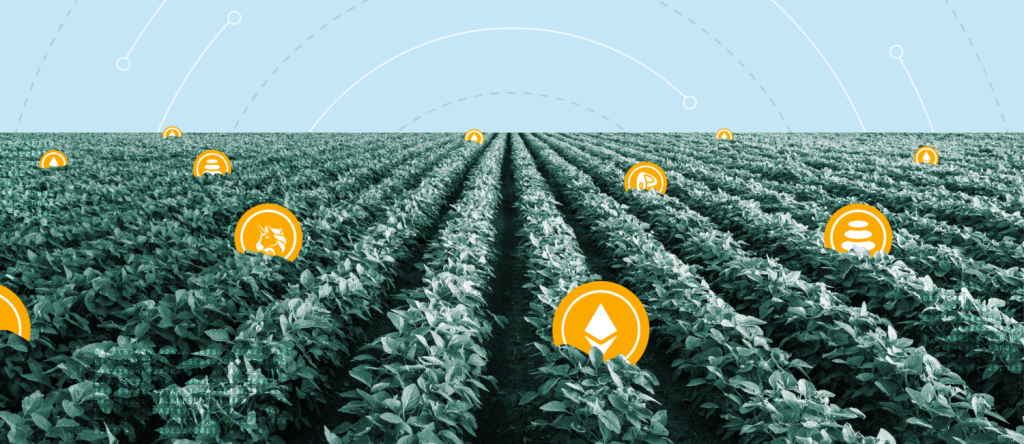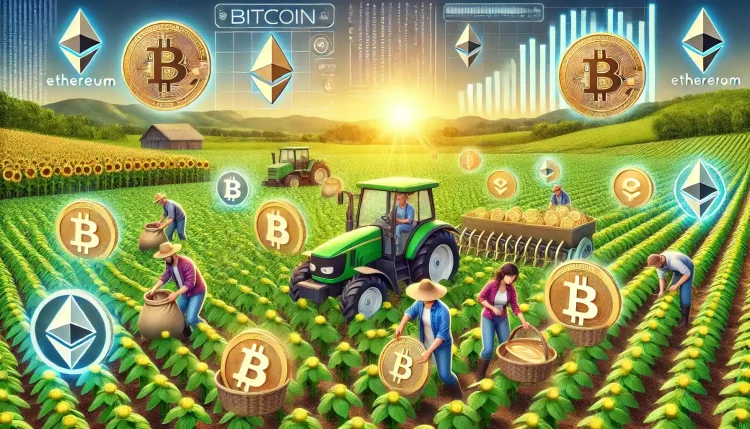Yield farming has become one of the most talked-about strategies in decentralized finance (DeFi). By providing liquidity to protocols, investors can earn rewards in the form of newly minted tokens, transaction fees, or governance incentives. The allure is obvious: triple- or even quadruple-digit APYs (annual percentage yields) that far outpace traditional financial products.
But behind the promise of overnight wealth lies a complex reality. Many new projects offering sky-high returns are riddled with risks—ranging from unsustainable tokenomics to exploitable smart contracts. The question investors must ask is whether yield farming with new projects represents a legitimate opportunity or simply a trap waiting to snap shut.
This article will explore three critical factors: understanding APY sustainability, assessing smart contract risk in early farms, and evaluating tokenomics to determine whether a project’s reward system is built for the long haul or destined for collapse.
The Lure of High APY: Why Yield Farming Attracts Investors
The DeFi boom of 2020 introduced yield farming as a new frontier for investors. Instead of letting tokens sit idle, users could provide liquidity to decentralized exchanges (DEXs) or lending protocols and earn rewards.
High APYs act as a marketing magnet. For new projects, promising 500% or 1,000% returns creates buzz and draws liquidity quickly. For investors, these numbers evoke the fear of missing out (FOMO).
Yet the fundamental truth is this: the higher the APY, the more critical it is to question its sustainability.
Understanding APY Sustainability
APY reflects the expected annual return for participants, but in DeFi, it is often variable and inflationary.
Why High APYs Can Be Misleading
- Token Emission Models
- Many projects distribute tokens aggressively at launch to attract liquidity.
- This creates massive supply inflation, diluting token value over time.
- Early adopters may profit, but later participants face heavy losses.
- Liquidity Dependence
- APYs often drop as more participants enter the farm.
- A pool offering 500% APY at $1M liquidity may quickly fall to 50% APY if liquidity grows to $10M.
- Market Conditions
- Bull markets sustain high APYs due to rising token prices.
- In bear markets, token values collapse, rendering rewards worthless.
Warning Signs of Unsustainable APYs
- APYs above 1,000% with no clear revenue source beyond token emissions.
- Rewards heavily skewed toward the project’s native token, with little backing.
- No defined roadmap for reducing token emissions over time.
How to Assess Sustainability
- Look for real yield: APYs supported by trading fees, borrowing interest, or external revenue streams.
- Examine the emission schedule: Projects with declining rewards and deflationary mechanisms tend to be more sustainable.
- Study historical APY trends on similar projects to gauge what’s realistic.
Smart Contract Risk in Early Farms
While unsustainable APYs erode value gradually, smart contract vulnerabilities can wipe out investor funds instantly. New yield farming projects often rush to launch, prioritizing growth over security.
Types of Smart Contract Risks
- Exploits and Hacks
- Vulnerabilities in code allow hackers to drain liquidity pools.
- Examples include flash loan attacks, reentrancy exploits, and logic errors.
- Rug Pulls
- Malicious developers intentionally drain liquidity after attracting deposits.
- This remains one of the most common risks in new farming projects.
- Unverified or Unaudited Contracts
- Projects without reputable audits expose investors to unknown risks.
- Even audited contracts can contain overlooked bugs.
How to Manage Smart Contract Risks
- Check for Audits: Reputable audits (from firms like CertiK, Trail of Bits, or Quantstamp) don’t guarantee safety but significantly reduce risks.
- Review Contract Transparency: Open-source, verified contracts are less suspicious than closed or hidden code.
- Avoid Overexposure: Never allocate more than you can afford to lose in unproven farms.
- Diversify Farming Strategies: Spread risk across multiple protocols instead of concentrating liquidity in one.
Smart contract risk is binary—a project is either secure enough to function or it’s vulnerable to collapse. Due diligence is essential.

Evaluating Tokenomics
Tokenomics—the economic model governing a project’s token—determines whether yield farming rewards create sustainable ecosystems or unsustainable hype cycles.
Key Elements of Tokenomics
- Supply and Emission Schedule
- Is there a capped supply, or is inflation unlimited?
- Are emissions front-loaded, or do they decline over time?
- Utility of the Token
- Does the token have genuine use (governance, staking, fee reductions)?
- Or is it simply a reward mechanism with no long-term purpose?
- Incentive Alignment
- Are rewards designed to encourage long-term participation?
- Or do they incentivize dumping tokens immediately?
- Distribution Plan
- How are tokens allocated between the team, investors, and the community?
- Large insider allocations increase the risk of price crashes when vested tokens unlock.
Red Flags in Tokenomics
- High percentage of tokens allocated to the development team.
- Lack of lock-up periods or vesting schedules.
- Rewards concentrated only in native tokens without external revenue support.
Positive Tokenomic Models
- Deflationary mechanisms (buybacks, token burns).
- Dual-token systems where one token accrues value while another serves as a utility/reward.
- Revenue-backed rewards, such as redistributing trading fees or lending interest.
Projects with robust tokenomics can weather market cycles, while weak models collapse once hype fades.
Case Studies: Yield Farming Opportunities vs. Traps
- Uniswap & Aave (Opportunities)
- These projects built real ecosystems with sustainable yields.
- Returns were modest compared to hyped farms, but they proved durable.
- SushiSwap (Early Trap, Later Recovery)
- Initially launched with unsustainable APYs and a controversial developer exit.
- Later restructured tokenomics and governance, becoming a lasting DeFi protocol.
- Countless 2020–2021 Farms (Traps)
- Meme-themed farms offering 10,000% APYs collapsed within weeks.
- Investors who chased unsustainable yields often lost everything.
These examples show that the difference between opportunity and trap lies in sustainability and risk management.
Balancing Risk and Reward in Yield Farming
Yield farming in new projects isn’t inherently bad—it’s about calculated exposure.
- Allocate only a small percentage of your portfolio to experimental farms.
- Focus on projects with audited contracts and transparent teams.
- Monitor APY declines and adjust strategies accordingly.
- Always have an exit plan, especially in high-inflation models.
Treat new farming projects as speculative opportunities, not long-term foundations of a portfolio.
Conclusion: Opportunity or Trap?
So, is yield farming with new projects an opportunity or a trap? The answer depends on the due diligence of the investor.
- For disciplined investors who study tokenomics, monitor APYs, and manage risk exposure, yield farming can be a legitimate opportunity to earn high returns and support innovative ecosystems.
- For reckless participants chasing unsustainable yields without evaluating risks, yield farming becomes a trap—one that empties wallets as quickly as it fills them.
Ultimately, the line between opportunity and trap is thin, but with the right strategies, investors can navigate it wisely.

























